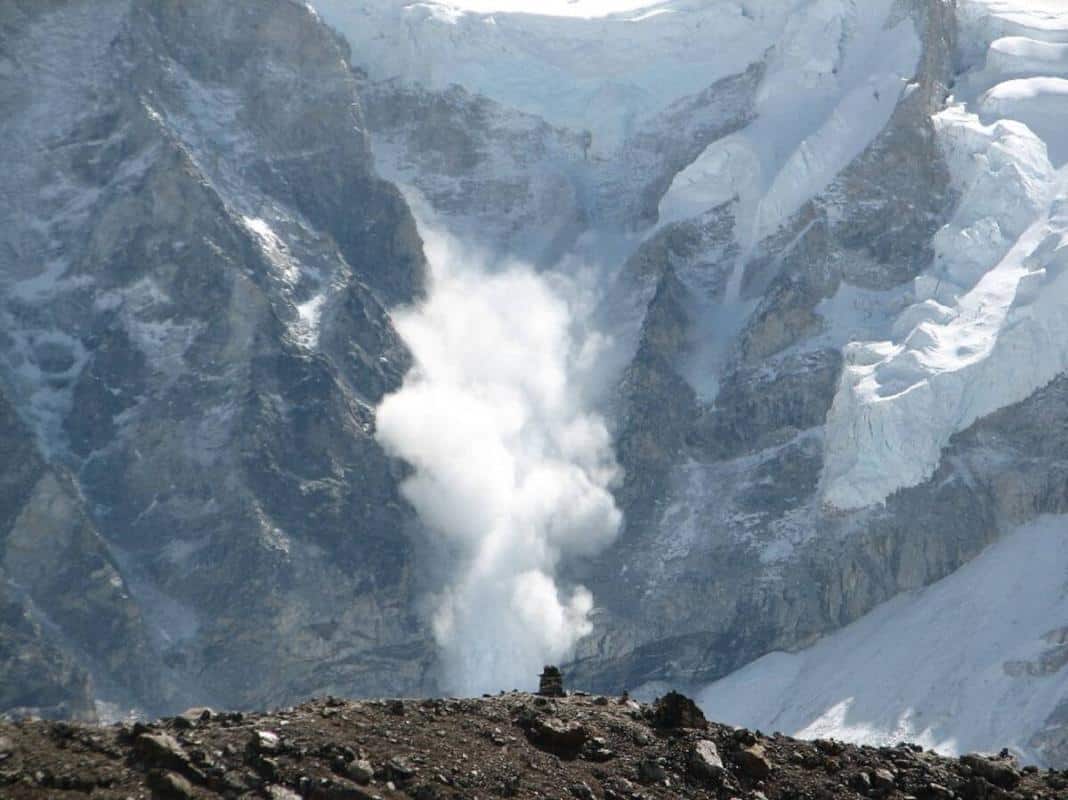During winter, avalanches are a significant risk in Banff National Park if you venture into the backcountry for skiing, snowshoeing, and other winter activities. In this post, you’ll read everything you need to know about avalanches in Banff National Park.
You probably already know, but let me stress the following: Avalanches should not be taken lightly.
Parks Canada provides information and resources to help you stay safe, including avalanche forecasts, safety tips, and training programs. But, of course, accidents can still happen.
In recent years, Banff National Park has seen several incidents involving avalanches, including injuries and even fatalities. And according to Parks Canada, eleven people die in avalanches every year in Canada on average.
It makes it all the more evident to take necessary precautions when venturing into the backcountry.
Anyway, want to spice up your knowledge about avalanches in Banff? Then read on. It could save your life!
What Are Avalanches?
An avalanche is a sudden and rapid flow of snow down a slope, often triggered by external factors like weather conditions or human activity.
There are several types of avalanches, including:
- Loose Snow Avalanches: occur when a layer of fresh snow falls on top of an older, weaker layer. The fresh snow can easily break away, causing loose snow to flow downhill.
- Slab Avalanches: occur when a thick layer of snow breaks away from a weaker layer beneath it, creating a slab that can slide downhill.
- Wet Avalanches: occur when warm temperatures cause the snow to melt, creating a layer of water that can flow downhill.
Avalanches can occur at any time of year, but they are most common during winter when more snow is on the ground.
In Banff National Park, avalanches can occur from November to June. You should be aware of the risks before heading out into the backcountry.
Taking precautions when traveling in avalanche-prone areas, such as carrying proper equipment like an avalanche transceiver, shovel, and probe, is essential.
Also check the Parks Canada website for up-to-date avalanche conditions before you head out into the park.
Where Do Avalanches in Banff National Park Occur Most?
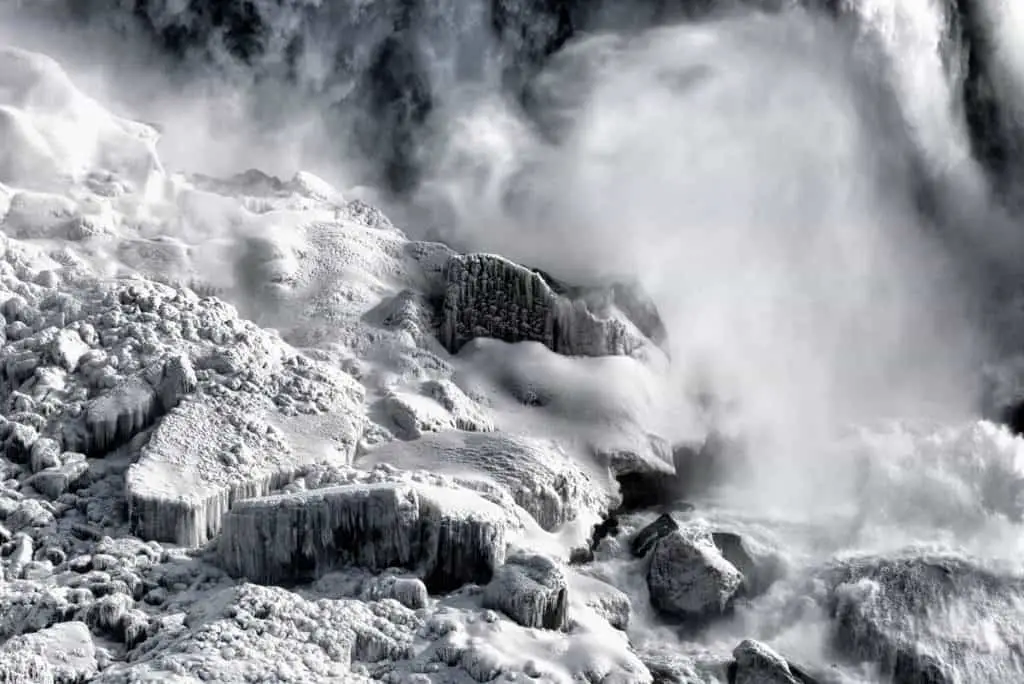
No specific area in Banff National Park is most prone to avalanches. According to Parks Canada, the potential for avalanches exists on steep and even moderately steep snow slopes throughout the park.
It further states that visitors who travel into backcountry terrain exposed to avalanches must accept the risk of making that choice.
Avalanche Safety in Banff National Park
Always take safety precautions if you want to stay safe in Banff National Park when venturing out for backcountry winter fun. Below, you’ll read how you can do this.
Avalanche Safety Equipment
One of the most important things you can do is to carry the proper avalanche safety equipment. This equipment includes:
- Avalanche transceiver
- Probe pole
- Shovel
- Airbag backpack
An avalanche transceiver is a small device that emits a signal that other transceivers can pick up. This is important if someone in your group is buried in an avalanche.
The probe pole is used to locate the buried person, and the shovel is used to dig them out.
An airbag backpack can help keep you on the surface of the snow in the event of an avalanche.
Avalanche Safety Training
Even with the proper equipment, having the knowledge and skills to use it effectively is essential. That’s why I recommend you take an avalanche safety course before traveling in avalanche terrain.
These courses teach you how to recognize avalanche terrain, use your equipment, and make informed decisions when traveling in avalanche terrain.
In addition to taking a course, it is vital to stay up-to-date on current avalanche conditions.
Check the latest information on the Parks Canada National Parks Avalanche Warnings and Avalanche Canada websites.
Just remember, even with the proper equipment and training, safety is not guaranteed in avalanche terrain. Always travel with caution and make informed decisions based on current conditions.
Avalanche Forecasting in Banff National Park
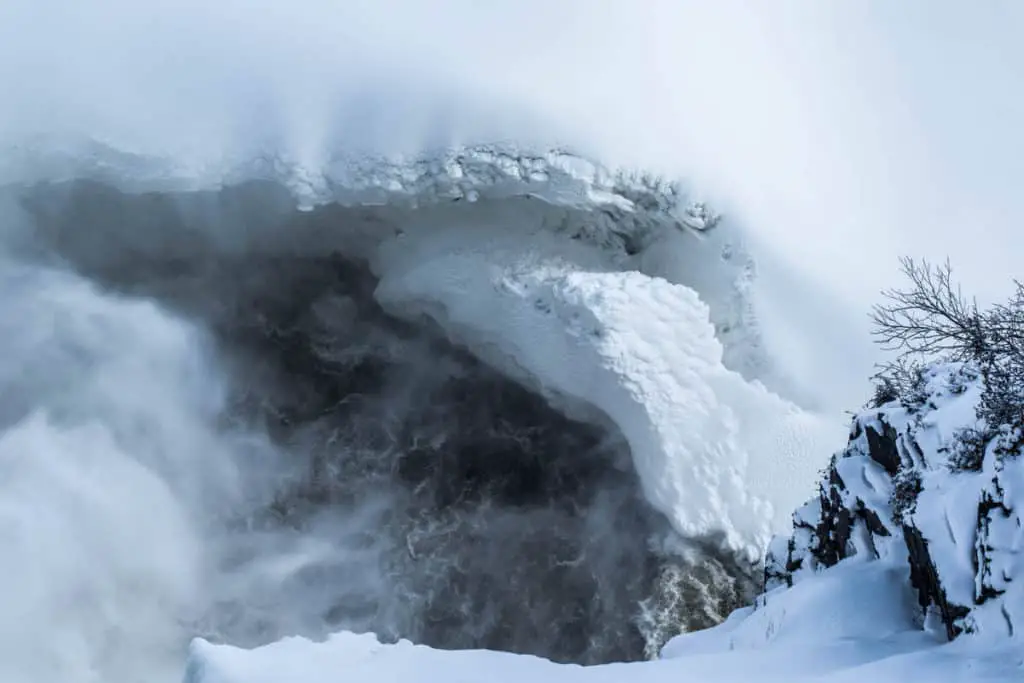
As Banff is a major national park, you can easily access the latest information regarding possible avalanches in the area.
Avalanche Bulletins
Avalanche forecasting predicts the likelihood and severity of avalanches in a given area. In Banff National Park, the Canadian Avalanche Centre (CAC) issues daily avalanche bulletins during winter.
These bulletins provide information about the current snowpack, weather conditions, and avalanche hazards. They are an essential tool for planning to travel in the backcountry.
The bulletins use a five-point scale to rate the avalanche hazard: Low, Moderate, Considerable, High, and Extreme. Each rating corresponds to a different level of danger, and the CAC provides guidelines for safe travel in each category. Oh, and please note that even a Low rating does not mean there is no risk of avalanches.
Avalanche Terrain Ratings
In addition to the bulletins, Parks Canada provides Avalanche Terrain Ratings for specific areas in Banff National Park. These ratings identify the level of risk for avalanches in a particular location.
They are based on slope angle, elevation, and vegetation cover. The ratings range from Simple to Complex, with Complex terrain presenting the highest risk.
It’s also good to know that Avalanche Terrain Ratings are not a substitute for daily avalanche bulletins. They are meant to be used with bulletins to make informed decisions about traveling in Banff’s backcountry.
Before heading out, you should always check both the daily avalanche bulletins and Avalanche Terrain Ratings.
Avalanche Incidents in Banff National Park
Despite Avalanche Terrain Ratings, avalanche forecasts, and the latest information on avalanches in the park on Park Canada’s website, accidents still happen in Banff.
Recent Avalanche Incidents
In May 2022, two skiers of a group of three were injured in a small avalanche at Aemmer Couloir on Mount Temple. Parks Canada officials transferred the two injured people to the hospital.
In 2019, three professional mountain climbers were killed in an avalanche at Canada’s Banff National Park. David Lama, Jess Roskelley, and Hansjörg Auer were attempting to climb the east face of Howse Peak when the avalanche occurred.
The bodies of the climbers were found several days later.
How to Protect Yourself From Avalanches in Banff
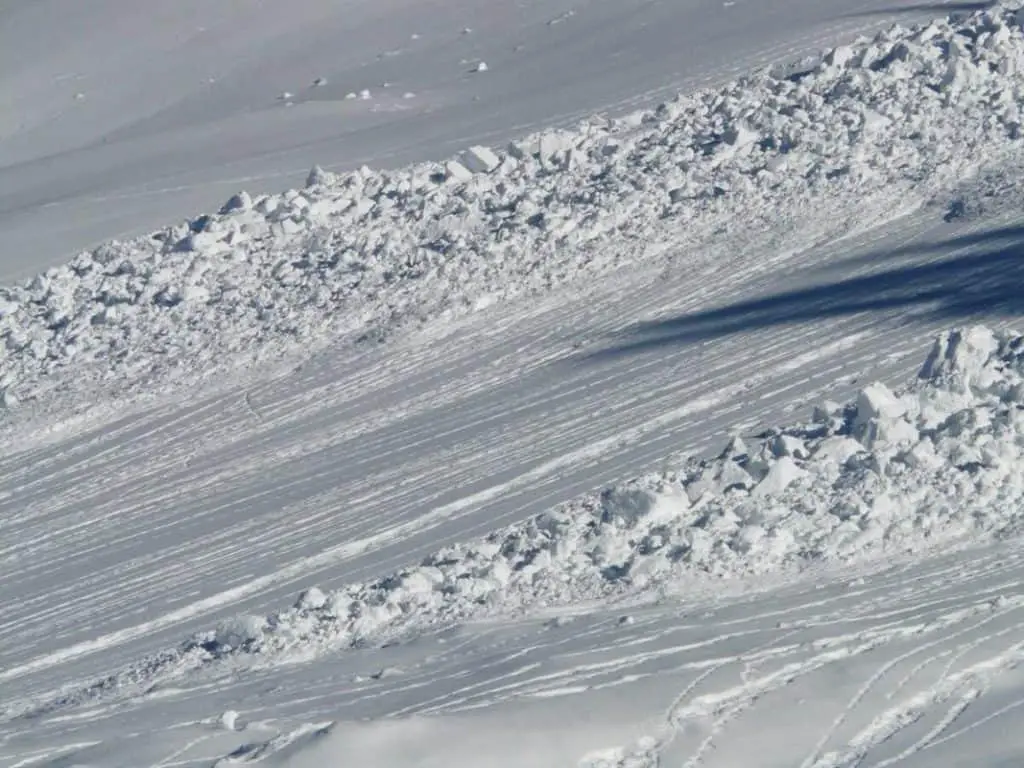
If you plan to visit Banff National Park during the winter season, it’s essential to be aware of the potential dangers of avalanches. Here are a few tips to help you stay safe:
- Check the avalanche forecast before you go. Parks Canada provides daily updates on avalanche conditions in the park. Check the forecast before heading out and adjust your plans accordingly.
- Travel with a partner or group. Never venture into the backcountry alone, and make sure you have a plan in case of an emergency.
- Carry the appropriate gear. This includes a transceiver, probe, and shovel. Make sure you know how to use them before heading out.
- Stay on marked trails. Avoid venturing into off-trail areas, which are more prone to avalanches.
- Watch for warning signs. These include recent avalanches, cracking or collapsing snow, and whumpfing sounds.
Maybe it’s a bit bland, but the best way to stay safe in avalanche terrain is to avoid it altogether.
If you’re not experienced in backcountry travel or unsure of the conditions, stick to marked trails and enjoy the park’s winter beauty from a safe distance.
What to Do in Case You Get Hit By an Avalanche
Being caught in an avalanche is a terrifying experience, but there are some things you can do to increase your chances of survival. Follow these steps:
- Try to stay on the surface: As soon as you realize you are caught in an avalanche, try to stay on the surface by swimming or rolling. This will help you stay on top of the snow and avoid getting buried.
- Hold on to something: If you cannot stay on the surface, try to grab onto something sturdy, like a tree or a rock. Holding on to something can help you avoid getting buried and can also help you stay oriented.
- Create an air pocket: If you do get buried, try to create an air pocket in front of your face by cupping your hands in front of your mouth. This will give you an air supply while you wait for help to arrive.
As a piece of general advice: try to stay calm. Then follow these steps to increase your chances of survival.
How to Avoid Triggering an Avalanche
If you plan to hike or ski in Banff National Park, it’s important to be aware of the risks associated with avalanches. Here are some tips to help you avoid triggering an avalanche:
- Check the avalanche forecast before heading out. Avalanche.ca provides daily avalanche forecasts for Banff National Park, found on its website.
- Stay on marked trails and avoid venturing into backcountry areas unless you have the proper training and equipment.
- Avoid steep slopes and areas with recent avalanche activity, such as cracked or wind-blown snow areas.
- Travel in groups of at least two people and keep a safe distance between each other to avoid triggering an avalanche.
- Carry avalanche safety equipment, including a beacon, shovel, and probe, and know how to use them.
- Be aware of weather conditions, as warmer temperatures and heavy snowfall can increase the risk of avalanches.
By following these tips and being aware of the risks, you should be able to stay safe during winter in Banff National Park.
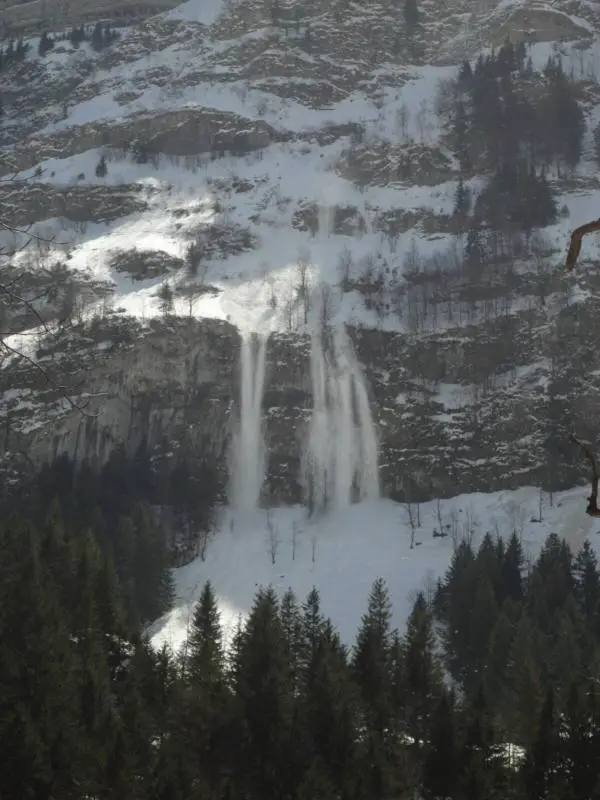
When Do Avalanches Occur in Banff?
Avalanches are common in Banff National Park and can happen at any time of year.
However, the peak season for avalanches is from November until June, when the snowpack is at its highest and most unstable. During this time, you should exercise caution and know the risks associated with avalanche terrain.
According to Parks Canada, thousands of avalanches occur annually throughout Banff National Park.
That’s why you should always be prepared and equipped with the necessary avalanche safety gear.
If you see a sign indicating that you are about to enter avalanche terrain, do not proceed unless you have avalanche training and the appropriate equipment that I mentioned above.
It’s important to note that avalanches can occur even in areas without visible snow, such as rocky terrain or forested areas.

